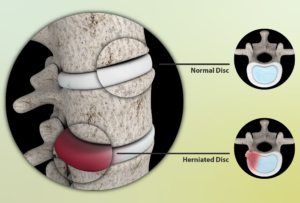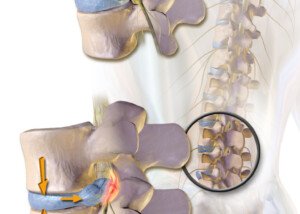
If you’ve been diagnosed with a herniated disc, a second opinion may be in order, because your low back pain may actually have a different cause.
Misdiagnosis can occur.
“The single most important thing for people who have been diagnosed with a herniated lumbar disc to know is that this may not be the cause of their pain at all,” says Jacob Teitelbaum, MD, medical director of the Fibromyalgia and Fatigue Centers nationally, and author of “From Fatigued to Fantastic!”
Dr. Teitelbaum, who specializes in pain treatment and management, explains, “Being an upright species, most people show normal wear and tear on their back X-rays and even back MRIs.”
He adds that X-rays and MRIs have shown very little correlation between pain and the changes that are seen on these images, and that studies back this up.
Most people over age 50, says Dr. Teitelbaum — even those who feel great — who “lie to the radiologist, saying that they have back pain — they are likely to get back an X-ray report suggesting that it is amazing they can still even walk.”
Part of my former editorial service included proofreading personal injury litigation transcripts.
Every so often I came across expert testimony by a physician who said that everyone over age 40 has some degree of degenerative changes to their discs, and that imaging will show this — but that many of these individuals are asymptomatic: no pain.
Dr. Teitelbaum further explains, “Unfortunately, most doctors don’t know that abnormal X-rays do not diagnose disc disease, and if they see changes on the back X-ray (which virtually everybody over the age of 30 or 40 will show), they blame the back pain on a herniated disc.”
Now this is really something to reflect upon, especially since one of the most prevalent diagnoses as a cause of back pain is, indeed, the herniated disc.

myupchar. com/en
My mother was diagnosed with this, following excruciating pain in her butt and leg.
I wonder for how long this disc herniation had been present prior to the onset of pain.
For all I know, it was years, and for all I know, the butt and back pain have an unrelated cause, such as a spasming piriformis muscle pressing on the sciatic nerve.
“Unless the pain is at the level of the disc, and the X-ray findings correlate with neurologic changes, the pain is more likely to be coming from muscle pain or simply arthritis in the spine,” says Dr. Teitelbaum.
He adds that this same unreliability of X-rays has been seen with other joints such as in the hands and feet, and even the temporomandibular joint (jaw).
Dr. Teitelbaum urges people to be acutely aware of all of this so that they don’t undergo unnecessary disc surgery.
Dr. Teitelbaum is a board certified internist and nationally known expert in the fields of fibromyalgia, chronic fatigue syndrome, sleep and pain.
is a board certified internist and nationally known expert in the fields of fibromyalgia, chronic fatigue syndrome, sleep and pain.
 Lorra Garrick has been covering medical, fitness and cybersecurity topics for many years, having written thousands of articles for print magazines and websites, including as a ghostwriter. She’s also a former ACE-certified personal trainer.
Lorra Garrick has been covering medical, fitness and cybersecurity topics for many years, having written thousands of articles for print magazines and websites, including as a ghostwriter. She’s also a former ACE-certified personal trainer.
.









































